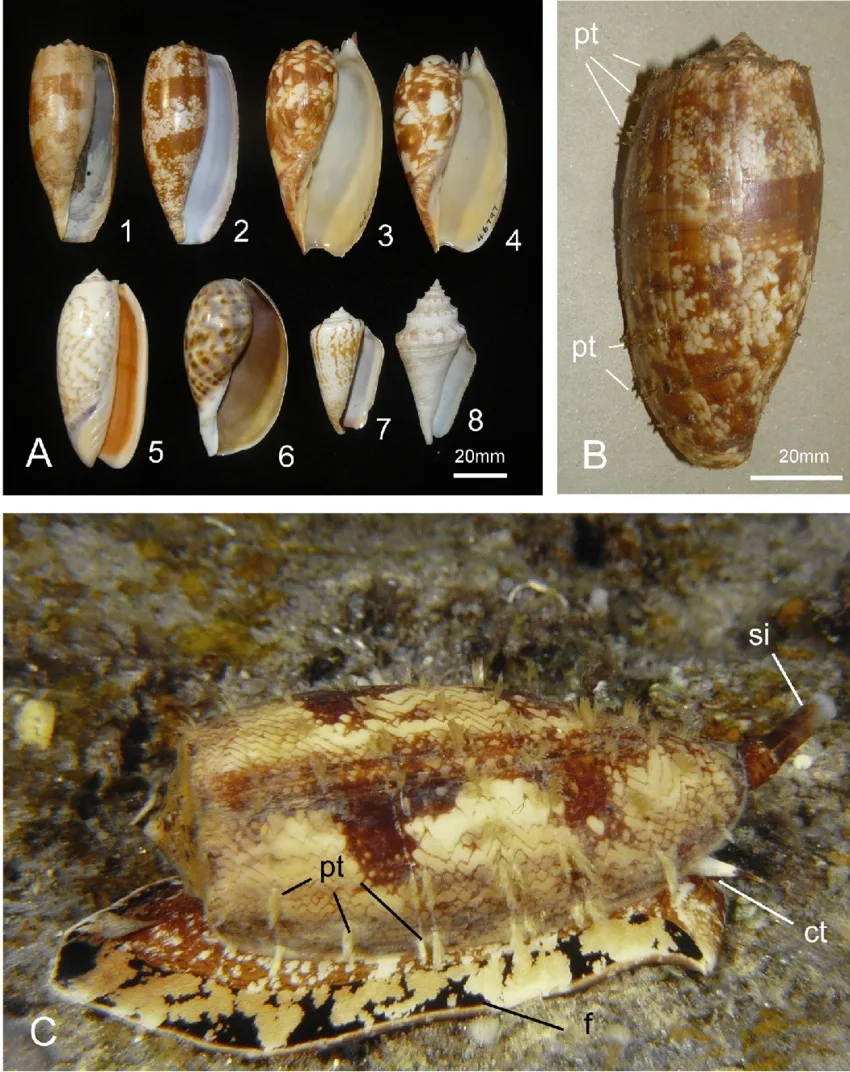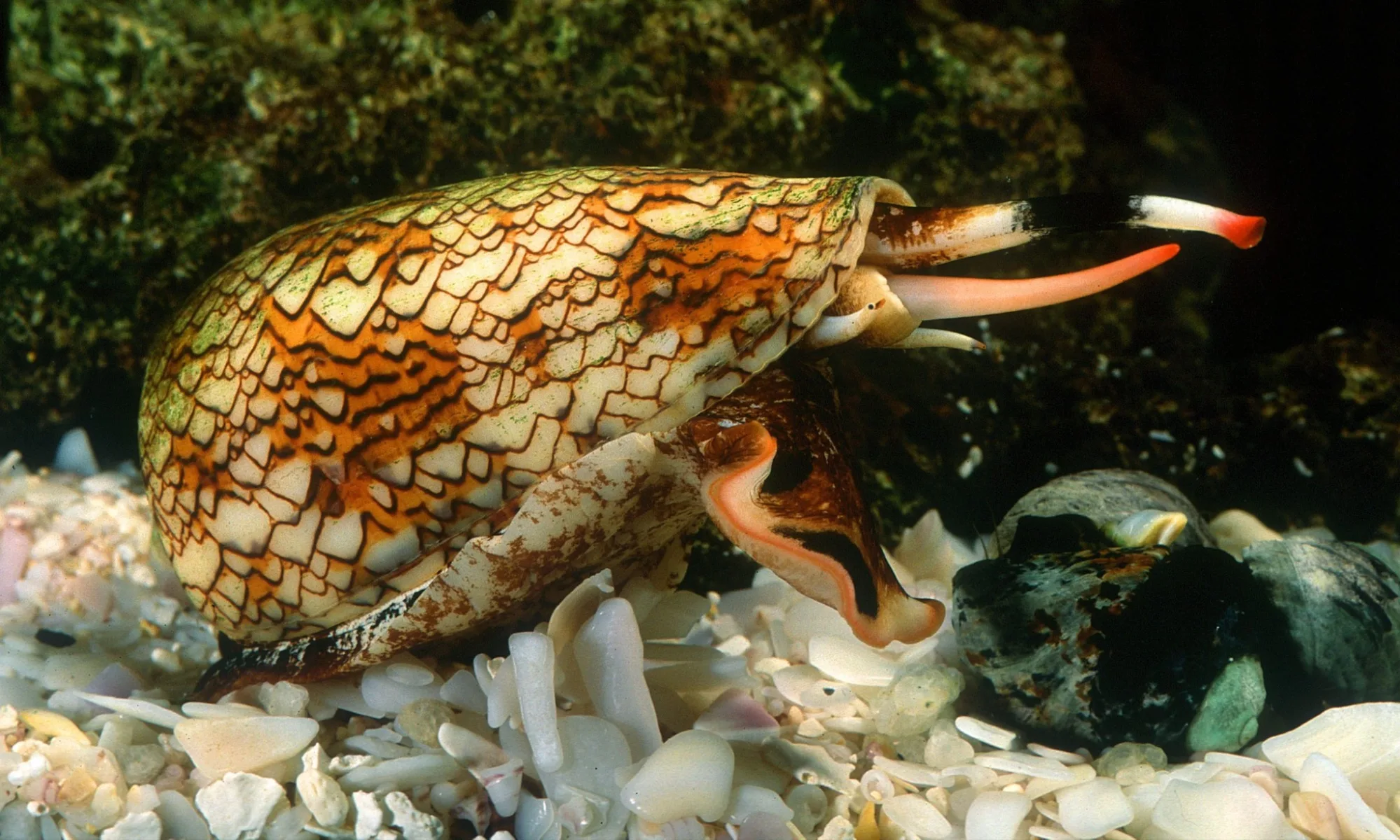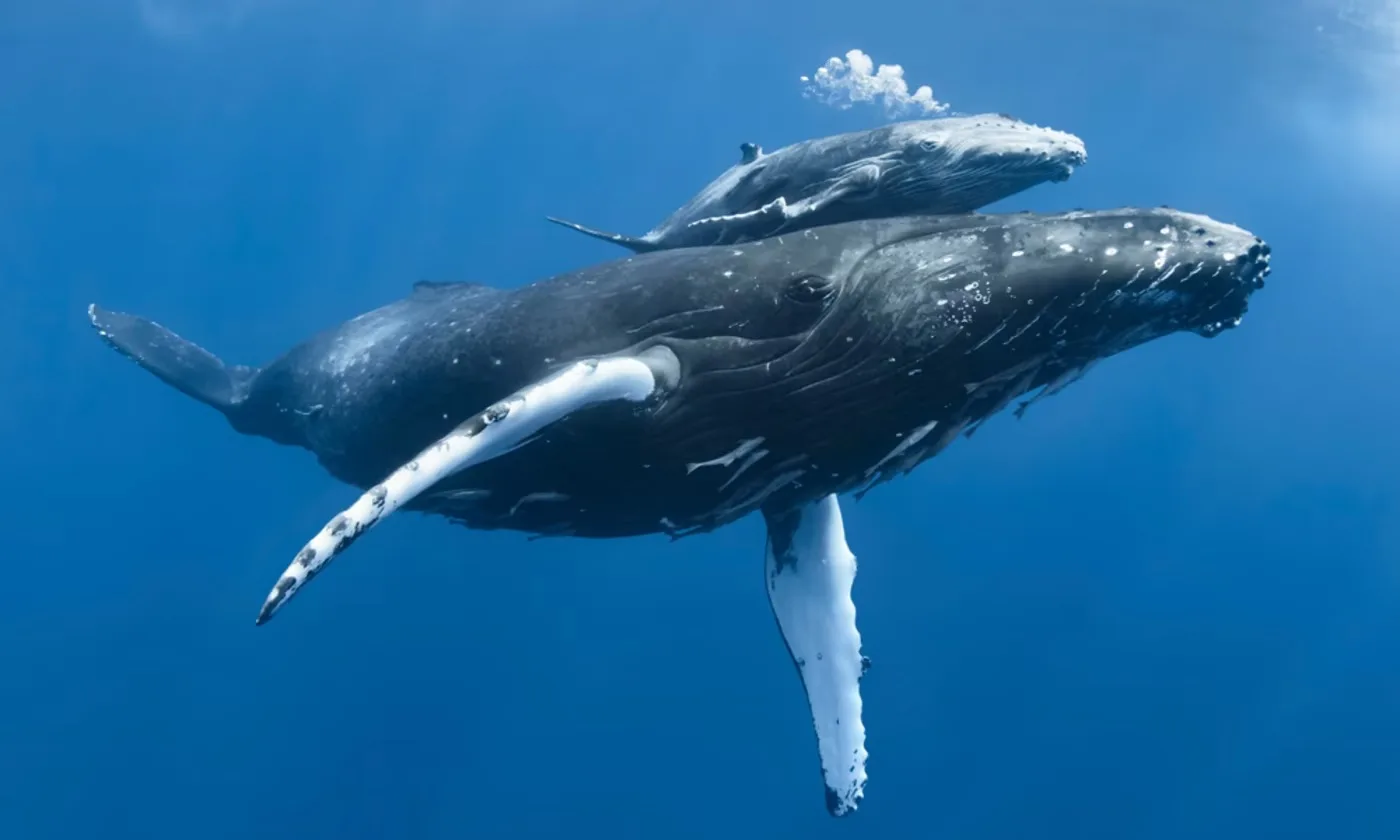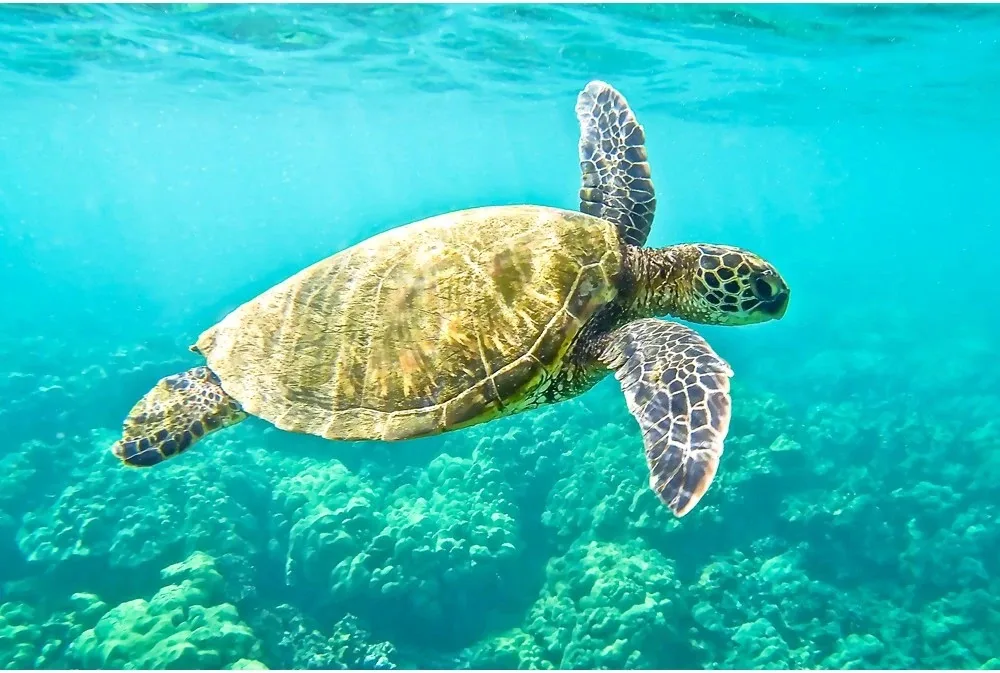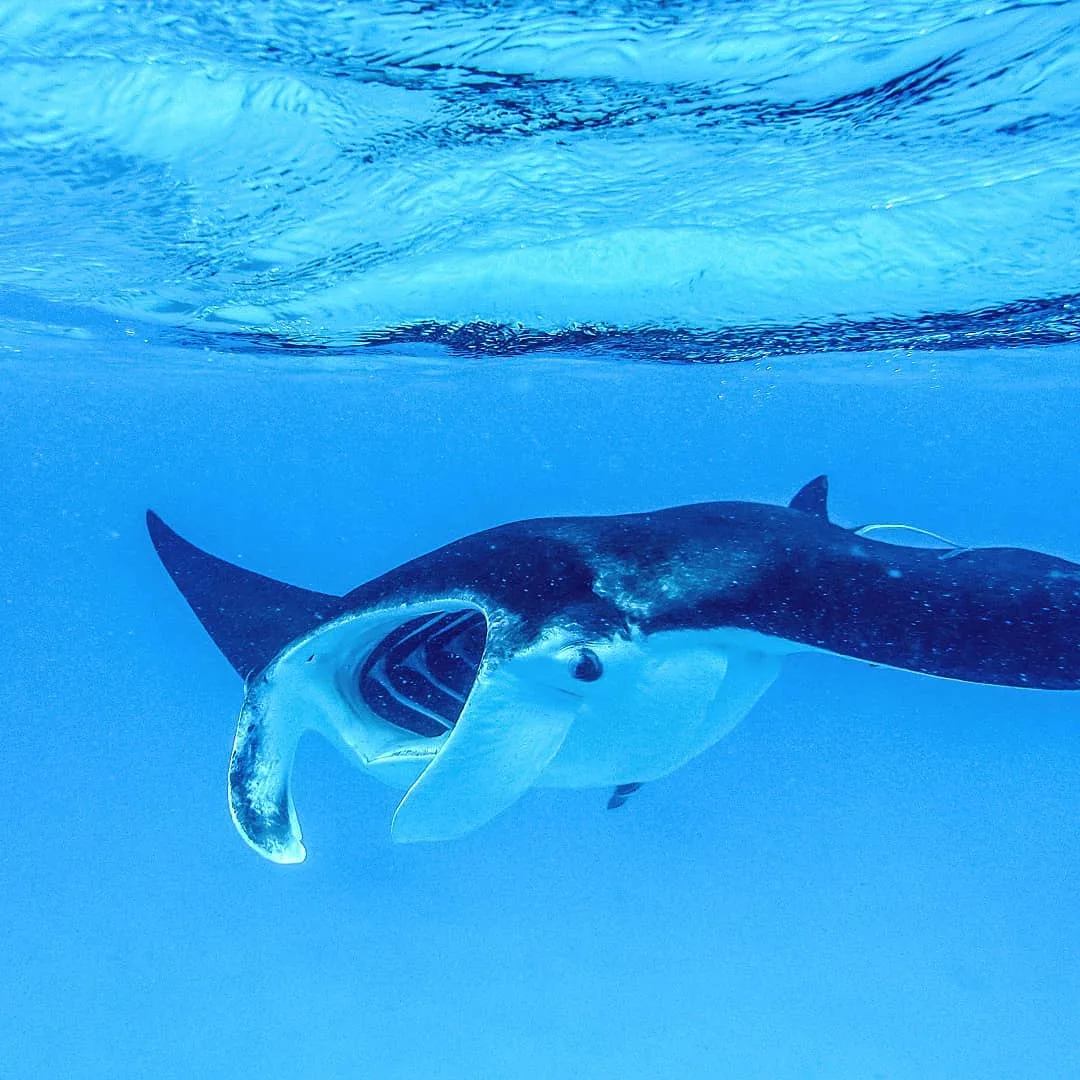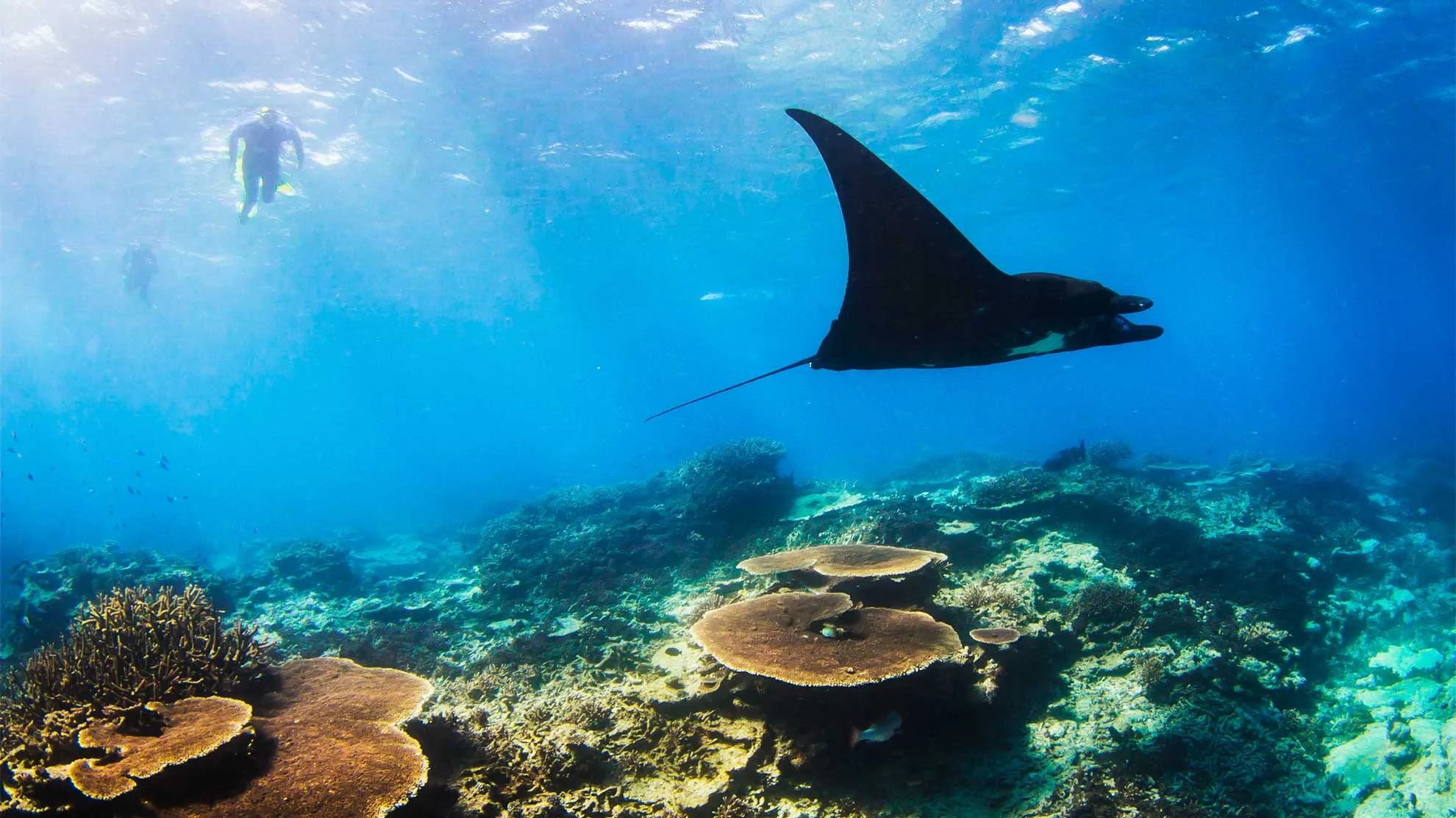Description
They have either a very thin or thick cone shaped shell of varying stripes or speckled appearance. These shells can be very attractive and because of this, may be picked up by the unwary, especially children.
Cone Shells or Cone Snails as they are sometimes called have teeth like small harpoons and can penetrate clothing.
Habitat
Cone snails are predatory gastropods that inhabit mostly mud, sand flats and shallow reef waters where the low and the high tides alternate.
Diet
Marine organisms, worms and other molluscs.
Venom
The venom consists of numerous neurotoxic peptides and can result in the death of humans and should be considered highly dangerous to humans and should not be handled whatsoever.
They will also cause muscle paralysis.
Conus Textile
The Textile Cone Shell has an irregular shingle-like pattern. It feeds on other molluscs which it immobilises by injecting powerful venom with a harpoon-like tooth. The strength of this venom varies according to the type of prey the cone targets. Fish eaters have the strongest venom whereas those that eat worms do not need the same toxicity. Growing to 10cm, the Textile Cone is highly dangerous to humans and should not be handled whatsoever.
